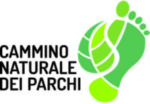An itinerant trek from Rome to L’Aquila that in about 430 km allows you to explore places, landscapes, the historical and cultural heritage and biodiversity of a large area of Central Italy straddling two regions, Lazio and Abruzzo. The path is divided into 25 stages to be covered in 4 weeks, and crosses three provinces and 42 municipalities, with some of the most beautiful villages in Italy. The route also allows you to get to know and appreciate the nature of the places, rich and changeable during the seasons, protected by 7 natural areas (4 regional parks and 2 nature reserves in Lazio and a national park between the provinces of Rieti and L’Aquila), and also characterized by 2 natural monuments and several Natura 2000 sites (of Community importance SCI/ZSC and special protection areas SPA).
These are the numbers of the “richness” of the path and of the places crossed by its itinerary that starts from Rome near the Circus Maximus, the eternal city destination of international and religious tourism, runs through the Caffarella Valley and the basolato axis of the Appia Antica in the Park of the same name until it reaches, through the Roman countryside, the Colli Albani. From Castel Gandolfo, a splendid town overlooking Lake Albano, it follows the paths in the Castelli Romani Park that border the lake, climb up to Monte Cavo and on the Faete apparatus, the highest part of the Colli Albani, cross the internal caldera of the Laziale Volcano until it reaches Rocca Priora. From here we descend to Colle di Fuori through extensive chestnut woods and continue towards Palestrina among fields, hazelnut groves and residential areas.
From the enchanting town of Prenestina the route continues towards Castel San Pietro Romano, crosses the natural monument Valle delle Cannuccete and passes through Capranica Prenestina along the high road of the Prenestini Mountains until it reaches the cliff of Guadagnolo, which dominates the Roman plain. Then along the Mentorella Sanctuary, one of the most ancient Marian sanctuaries in Italy and Europe, it descends into the Empolitan valley, climbs over the Ruffinei Mountains near Rocca Canterano and then reaches the Aniene valley going up its course to the Benedictine city of Subiaco, dominated by the imposing Rocca dei Borgia. Continue entering the Park of the Simbruini Mountains, visiting the Benedictine Monasteries of Santa Scolastica and Sacro Speco, and going up to the tourist resort of Livata. Through extensive beech woods and karst plateaus you will reach the aerial peak of Monte Autore (1855 m a.s.l.), where your gaze sweeps over the vast horizon, descending through forests and pastures to Camerata Nuova, then crossing the Tiburtina-Valeria towards Riofreddo and Cineto Romano.
Remarkable and suggestive are the waterfalls of the Rioscuro torrent (a natural monument), from which you continue entering the Parco dei Monti Lucretili, skirting the small lakes of Percile and gaining the wooded ridge that leads to Orvinio. From here we leave the park to descend into the valley that hosts the Turano lake, an artificial basin dominated by the village of Castel di Tora. The path continues inside the Reserve of Monte Navegna and Monte Cervia through woods and fields reaching Marcetelli and from here the Salto Lake which you cross in a side bend to reach Pescorocchiano. We proceed towards Corvaro di Borgorose in the territory of Rieti on the border with Abruzzo, bordering the Duchessa Mountains Reserve.
The next stage allows the walker, going up the cool Malito Valley along the valley floor, to gain Castiglione and then reach the plateau of Rascino with its charming little lake and the cultivation of legumes. Then, through a beech wood, you will reach the Cicolano on Mount Nuria (1888 m a.s.l.), from here, at a high altitude among thermophilic woods and cultivated fields, to the valley of the river Velino that crosses the town of Antrodoco. From the characteristic village you go up the course of the river crossing the Velino gorges along the route of the ancient Salaria up to Posta, then continue towards Cittareale leaving the Salaria, through fields and woods to reach the village and the magnificent fortress. Then, going back up the source of the Velino, you will reach the watershed with Umbria along the border for wide ridges until you descend into the high valley of the river Tronto to Accumoli, entering the vast National Park of Gran Sasso and Monti della Laga.
The view of the imposing chain of the Laga, rich in water and waterfalls, clashes with the valley territory severely damaged by the recent earthquakes in Central Italy that in 2016 devastated the towns and human activities. Here the step becomes light and our passage testifies the sense of closeness and solidarity towards the populations so hard hit. We then go up the river Tronto to reach Amatrice, an important town in the upper Lazio region, which is struggling to rise again, framed by the peaks
